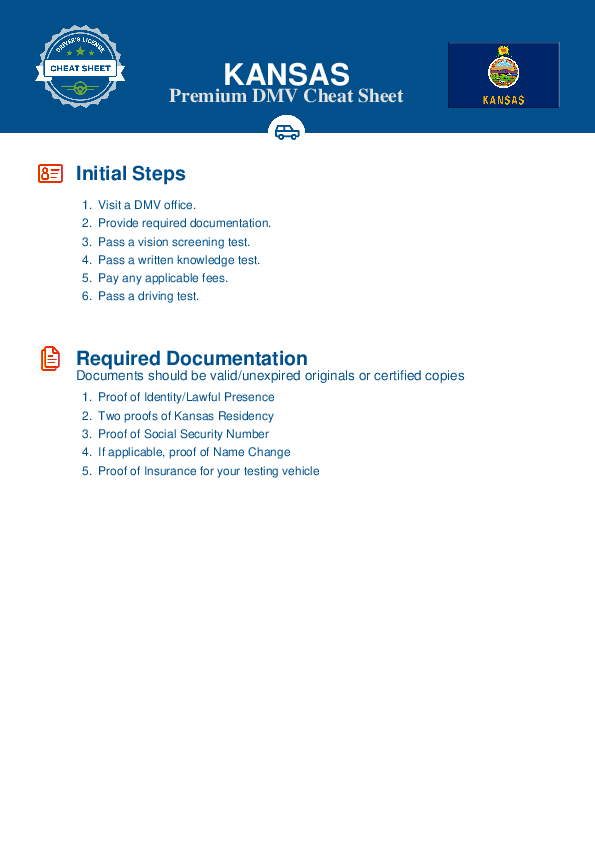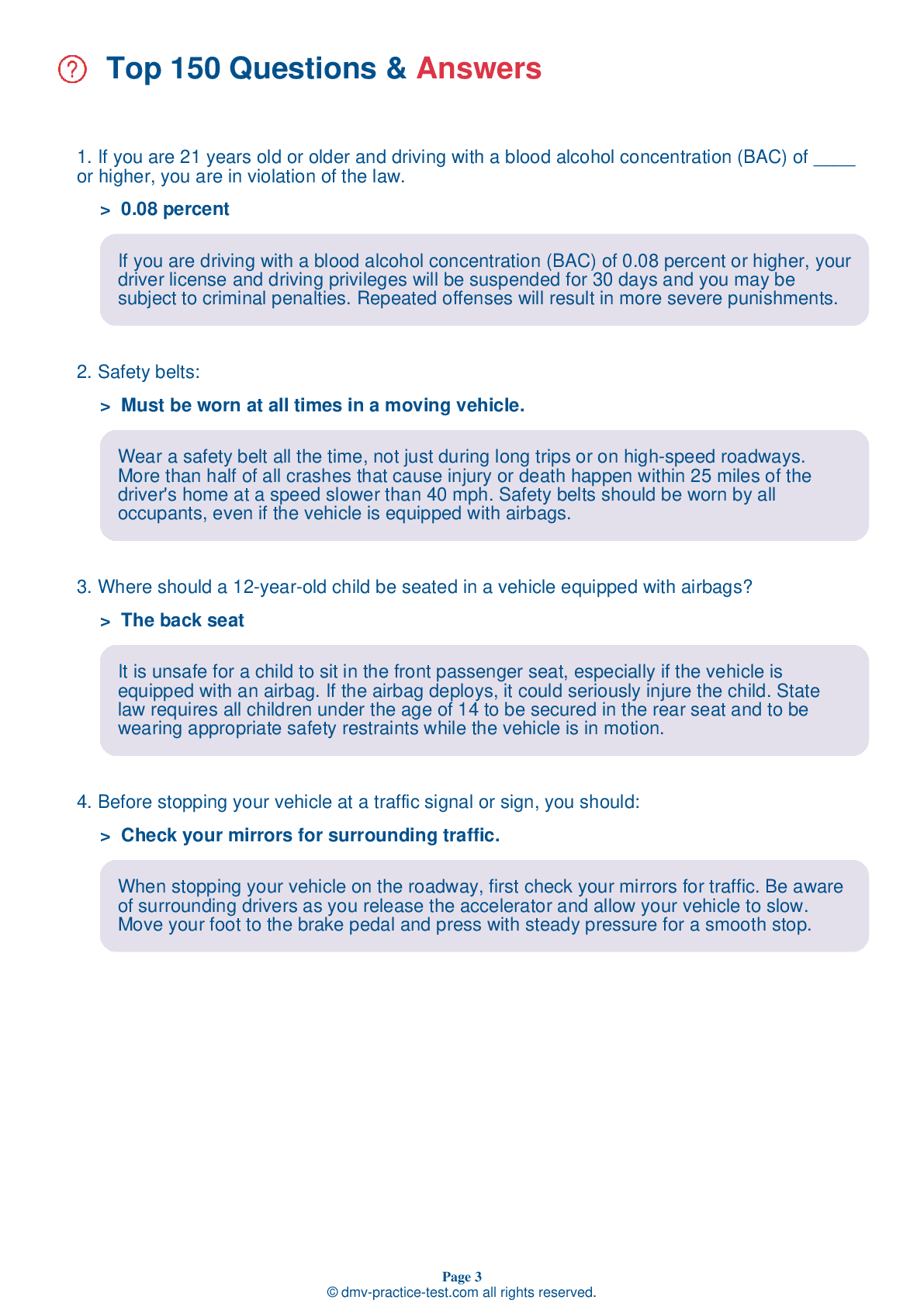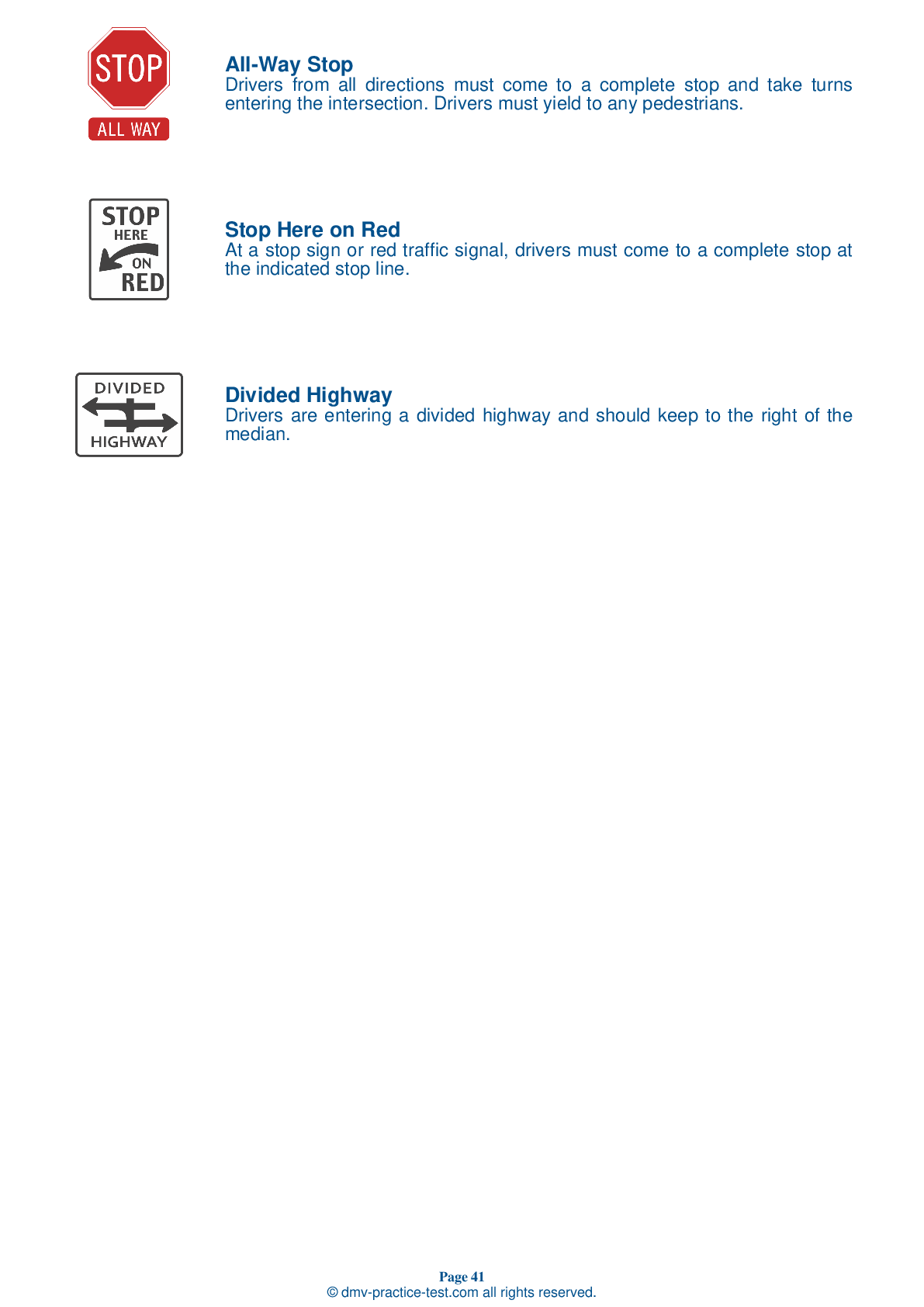FREE Kansas DMV Practice Test #9 Page 3 of 3
In Kansas, the DMV practise tests have been revised for January 2025. It includes questions based on the Kansas Driver Handbook's most essential traffic signals and regulations for 2025. Use actual questions that are very similar (often identical!) to the DMV driving permit test and driver's licence exam to study for the DMV driving permit test and driver's licence exam.
On the practise exam, each question gets a tip and explanation to help you remember the concepts. The written component of the official Kansas DMV test will include questions about traffic rules, traffic signs, and driving statutes, as well as information from the Driver Handbook.
To obtain a passing grade, you must correctly answer 20 of the 25 questions. Take our DMV practise exam to help you prepare for your Kansas instruction permit or driver's licence.
The DMV exam is available in several languages.
Using any kind of testing assistance will result in an automatic fail, and the DMV may take additional action against your driver's licence, so stay away from it.
17 . What should a driver do when approaching a traffic control signal that is not in operation?
When traffic control signals are not working, a driver must always treat the intersection as an all-way stop and come to a complete stop, unless otherwise directed by law enforcement. The driver must then look and yield the right-of-way before entering the intersection.
18 . A broken yellow centerline means that:
A broken yellow centerline means that a driver may cross the centerline to pass another vehicle on the left as long as there is no oncoming traffic. Drivers should never cross a solid yellow centerline in order to pass.
19 . Remove all snow, frost, and ice from:
It is important that you are able to see clearly through all of your vehicle's windows, including the windshield. Remove all snow, ice, and frost from your vehicle's windows and mirrors before you start to drive.
20 . If you are driving near a large commercial vehicle, you should:
Because large commercial vehicles have large blind spots on each side, you should avoid driving beside them for long periods of time.
21 . Regulatory signs are:
Regulatory signs inform drivers of specific laws that must be obeyed. Displayed laws may be about traffic direction, lane use, turning, speed, parking, or special situations. Regulatory signs are commonly white squares or rectangles with black, red, or green letters or symbols.
22 . If you are driving and you see animals standing near the roadway:
Slow down and proceed with caution if you see animals that are standing near the roadway. They may unexpectedly bolt or change direction at the last moment. Some animals travel in packs, so there may be more animals just out of sight that are also near the road.
23 . What is the purpose of rumble strips?
Rumble strips create noise and vibrations to warn drowsy or inattentive drivers that they are straying off of the road or are approaching a stop sign or signal.
24 . When a car with bright headlights drives toward you at night, you should:
To avoid being blinded when driving at night, do not look directly at the headlights of oncoming cars. Instead, look toward the right edge of the road until the oncoming driver has passed.
25 . This sign means:

This sign means drivers cannot make a left turn. It is unsafe and unlawful to make a left turn at an intersection where this sign is posted.
Need Car Insurance? No problem!
Compare the best rates in Kansas and find a personalized policy that meets your needs.
1. Are You Currently insured ?
2. Married ?
3. Do you own your Home?
4. Do you have more than 1 car ?
5. Have you or a Family Member Honorably Served in U.S. Military ?
6. Your Name
7. Age
8. Zip code
IMPORTANT REMINDER:Auto Insurance is Mandatory to drive in Kansas. Get covered before you hit the road to avoid any fines.
Ranked by best match



